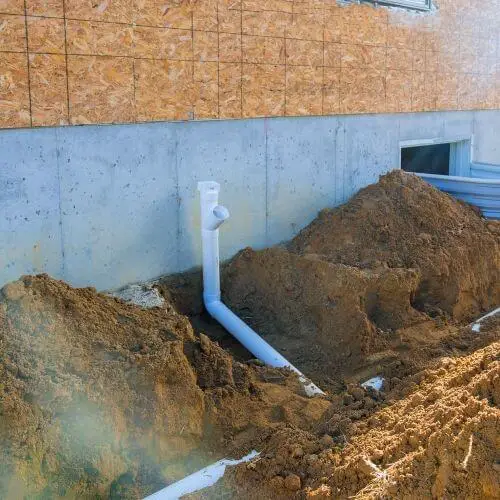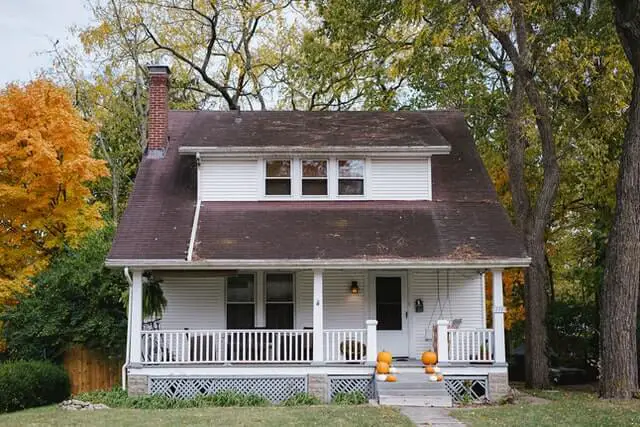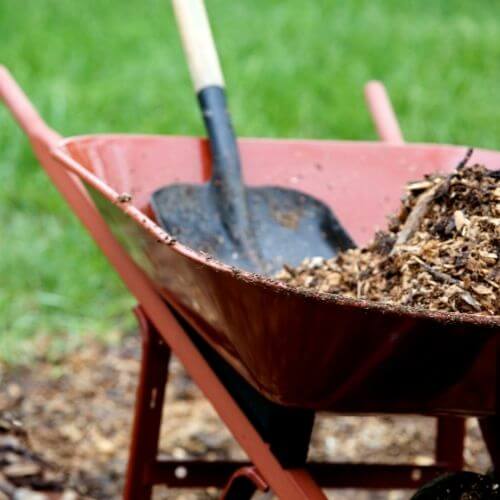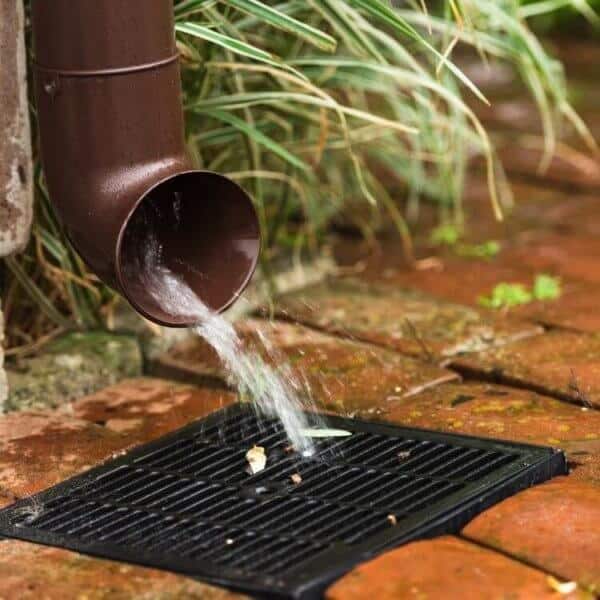What to put around the foundation of a house? Gravel, plants, or something else? We’ve shared more than 5 ideas in this blog!
Spring is almost here, and, if you are like most homeowners, you are about to start getting yourself busy with some gardening and landscaping tasks. You want your home and your yard to look wonderfully, which makes you think about ways to beautify the foundation of your home itself as well.
However, you are not quite sure what to put around the foundation of the house.

That’s exactly the reason why we created this blog in the first place – to give you practical advice on landscaping next to the house foundation.
We have to say that landscaping next to the house foundation is not 100% necessary but it is still highly recommended for a couple of reasons. It’s not only about making your home look attractive on the outside but also about the foundation’s integrity and preventing any unwanted damages and costly repairs.
Things you can put around your home’s foundation can contribute to providing the right amount of nutrients and water it needs, all whilst making sure there are no drainage issues that can prevent the water from draining away but actually into your home. Obviously, there are a lot of factors to consider when landscaping next to a house foundation so let’s get down to business and see what is the right thing to do.
What to Put Around Foundation of House?

In this section, we are going to share 5 ideas on what to put around the foundation of a house, which will, ultimately, increase its curb appeal and ensure your home is getting a certain level of moisture, all whilst draining away all the exess water. At the same time, this could be one of a few upgrades that will increase the value of your home. So, what do you need for this DIY grading around house project?
1. Drainage Rocks
Drainage rocks are among the most popular options when people think about what to put around the foundation of a house. The best thing about them is that they don’t absorb water, which contributes to better drainage (provided you don’t have issues with negative grading, which we’ll talk about in a bit). Optionally, you can add some sand in-between the rocks but do not overdo it, since sand will absorb water instead of letting it flow freely away from your home.
2. Gravel
Gravel is slightly finer than drainage rocks and can be used for the landscaping next to the house foundation. It provides natural drainage and prevents the accumulation of water around your home. Secondly, gravel also prevents soil molds, shrubs, and weeds from expanding and growing around the foundation. Optionally, you can place a weed membrane underneath the gravel to truly counteract weed growth.
Placing gravel around the foundation of your house can also help with heating your property since gravel radiates heat. In other words, once the sun is down, gravel will start releasing the heat it absorbed during the day and make your home warmer). This can also ensure no excess moisture is collected since warm gravel makes moisture evaporate.
Last but not least, for lavender and euphorbia, some of the popular Mediterranean plants, gravel makes an ideal setting. So, you can easily make an idyllic atmosphere in your yard and backyard by combining gravel and some of these plants while making sure your home’s foundation is strong and durable.
Here’s a short guide on how to place either drainage rocks or gravel around the foundation of your house.
- Remove any plants, grass, weeds, basically all vegetation, around the house.
- Rake in the soil using a leaf rake and just scratch the top layer of soil to make sure there are no bumps or lumps.
- Once the area is prepared, lay a plant liner or a weed membrane on top of it.
- Place rocks/gravel over the membrane and smooth out the uneven spots using a leaf rake.
Note that you will need about 88 pounds of gravel to cover 1sq meter of the soil around your house.
3. Flower Beds
If you are thinking mostly about an aesthetic aspect of your home, you can always place some colorful flower beds around your house’s foundation. This way, you’ll add a touch of beauty and elegance to it. Still, instead of placing the beds right next to your house, place them around 1 inch from it. Also, make sure to pick plants and flowers that don’t require too frequent watering [1] to keep all the unnecessary water away.
4. Mulch
If you are not a fan of rocks and stones around your foundation, you can always try with mulch. Mulching is another popular practice and has several benefits such as preventing grass and other weeds from growing around your home and protecting the foundation from water damage. Plus, you can choose between various color options, such as classic, black, blue, etc.
We also have to address that, unlike stones and rocks, mulch tends to rot and decay, which is why you should be redoing it after some time (in the best-case scenario, after a couple of years if you’ve got a high-quality product).
5. Shrubs
Shrubs make a good option if you want to cover the foundation of your house and make it more attractive as well. Plus, you can choose a dense shrub that will protect your home from the heat in the summer or a fruit-bearing one if you want to grow your own fruits. Shrubs are more than okay, as long as you are staying away from trees since tree roots can actually damage the foundation instead of protecting it.
Product Ideas When Landscaping Next to House Foundation

- We loved this nugget-shaped mulch you might want to check out, too, if you want to place some mulch around your house’s foundation! There is a 12-year color guarantee against color loss so you can have your peace of mind for many years to come. Unlike wood chip mulch, this one won’t get easily faded or rotten so you won’t have to replace it as frequently. You can also choose between 5 attractive colors – black, green, blue, redwood, and earth tone.
- These Royal Import gravels feature a natural look and have no sharp edges, which makes them safe if you have kids and/or pets. Place them around your home to prevent erosion and weed growth and to ensure proper drainage. You can use them around plants and shrubs as well to decorate the area.
- A weed membrane by Petgrow, made of high-quality polypropylene, will prevent weeds from spreading around the foundation of your home. You can lay it on the soil around your house worry-free since it will preserve the optimal amount of moisture while making sure water and air are smoothly circulating through it. This weed membrane is UV-stabilized and thick so you don’t have to lay anything on top of it, however, you would probably want to, for aesthetic reasons.
- You can use a plant liner instead of a weed membrane if you are more into more eco-friendly, 100% natural solutions. This coco plant liner is thick and sturdy but also looks nice and keeps a certain degree of moisture while still ensuring any excess water is drained away.
Bonus Tips for Landscaping Next to House Foundation

- Fix negative grading before starting any landscaping work. How to grade yard by hand? Determine the current slope in your yard. If certain spots seem lower or higher than most of the soil, you should either flatten them out or add some soil to even the terrain. In this blog, we elaborated more on negative grading and what you need to do to fix it and how to grade a yard by hand. We also talked in-detail about various drainage systems for houses in this blog.
- If you can clearly spot cracks and holes in the foundation itself, do not put anything on top of it. You will need to fix these cracks first because if this issue is left unfixed, mold and water can start threatening your foundation and the entire home.
- Do not plant any trees right next to the foundation. As we already mentioned, you can go for shrubs though, just make sure no trees with strong roots and large branches are located close to your home. Tree roots can disrupt your house’s foundation [2] – significantly increase the level of moisture and make it crack. If you still want to plant some trees in your yard, plant them at around 15-25 feet away from your home so they don’t pose a threat to it once they are fully grown.
- Make sure not to cover outlets and drains with plants or other materials that can prevent water from flowing away from your home. We, either way, recommend leaving a few inches uncovered so you can occasionally check if moisture is creeping into the foundation or not.
- If you want to ensure that the water is 100% drained and not endangering the foundation, clean your gutters from leaves and dirt and use gutter extensions.
- We mentioned several times that water should be driven away from the foundation of your house. Still, you should be watering the yard itself from time to time if you live in an area where it rains rarely in order to prevent soil expansion. Indeed, dried soil around the foundation of your house can make the foundation crack or start moving little by little.
Should You Use Plastic for Grading Around House?
Although some people use plastic to grade around their houses to prevent water from entering their basements, we wouldn’t recommend doing so because plastic is not a durable material. Once it starts cracking, water will start coming through these cracks. Plus, if you have negative grading, things can go down pretty quickly. As we previously mentioned, you can use a weed membrane or a plant liner, both of which are much better options than plastic.
Summary
If you had any doubts about what to put around the foundation of a house, we guess that, now, you know much more about landscaping next to the house foundation.

Michael Davis is a heating & plumbing expert who currently works as independent contractor in SC. He also writes for Plumbertip.
For almost 10 years he worked on various plumbing tasks across South Carolina.



